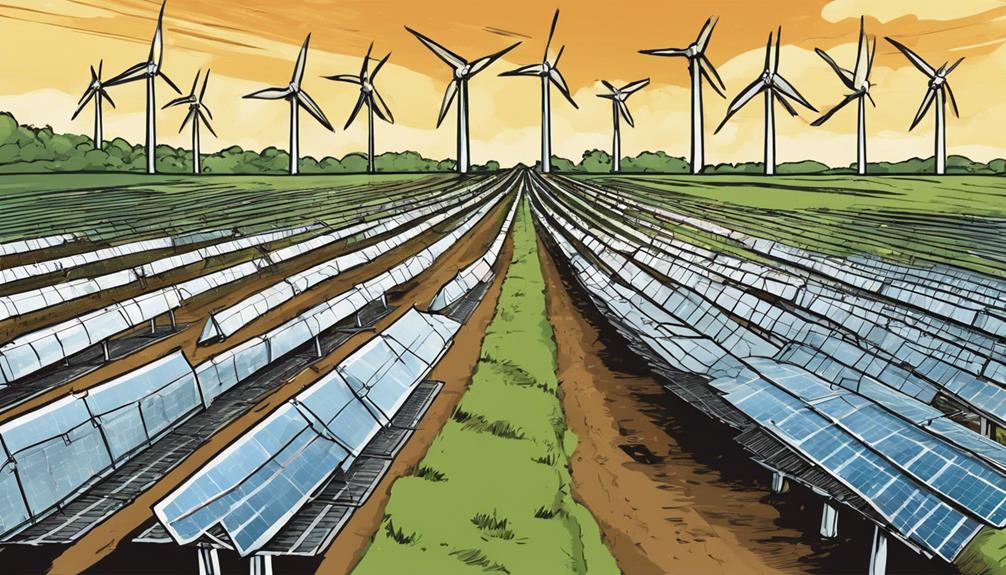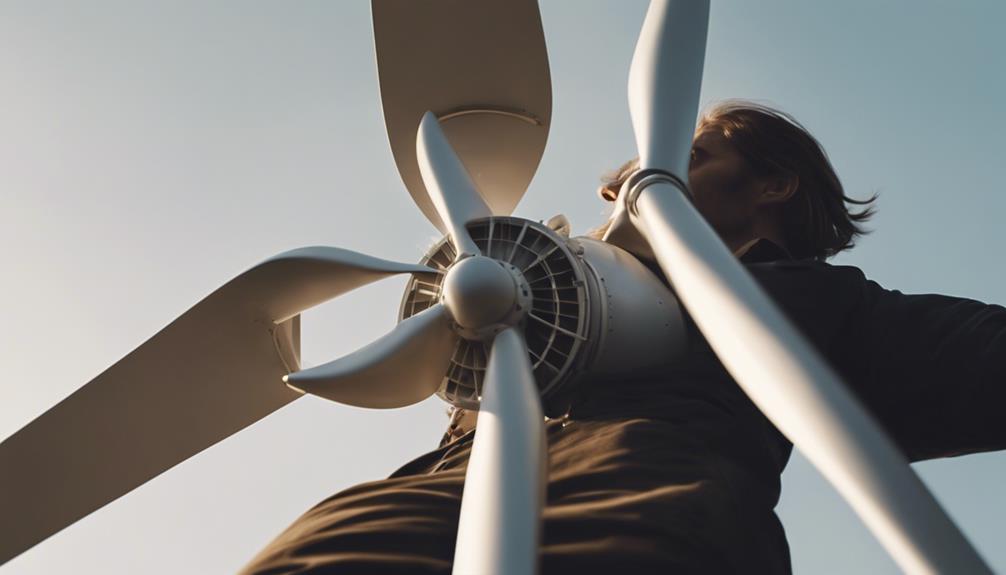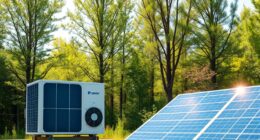When near wind turbines at night, be cautious of hypnotic blinking red lights that distract. Proposed regulations aim to address these concerns. Aircraft detection lighting activates only when needed, reducing the risk. Public relief grows with these safety measures. To balance renewable benefits with drawbacks, awareness is key. Financial worries about retrofitting systems exist, affecting future projects. Remember, staying informed about visibility concerns can help you navigate safely in the dark.
Key Takeaways
- Aircraft Detection Lighting Systems activate lights when aircraft approach, aiding visibility.
- Reducing blinking lights mitigates distractions and ensures safety for pilots and residents.
- FAA-approved solutions minimize light pollution from wind turbines at night.
- Public relief over improved safety with aircraft detection lighting systems near wind projects.
- Balance between safety and preserving rural landscapes with offshore wind projects.
Nighttime Visibility Concerns
Nighttime visibility concerns regarding wind turbines stem from the hypnotic and distracting effect of blinking red lights, prompting proposed regulations to address community worries. Residents have expressed unease about the constant flashing of lights on wind turbines, which can be mesmerizing and potentially hazardous, particularly for pilots and nearby residents.
In response to these community concerns, Washington state Rep. April Connors has introduced a proposal to restrict the use of excessive nighttime wind turbine lights. This initiative aims to mitigate the impact on local communities and enhance nighttime visibility without compromising safety.
Furthermore, the Federal Aviation Administration advocates for the implementation of aircraft detection lighting systems on wind turbines to improve visibility for aircraft while minimizing disturbances to residents and wildlife. These systems are increasingly being adopted in wind energy projects across the United States and globally.
The proposed regulations in Washington may soon mandate the installation of aircraft detection lighting systems in all new wind projects by 2025, signaling a positive step towards addressing nighttime visibility issues associated with wind turbines.
Aircraft Detection Lighting Systems

Enhancing aircraft visibility near wind turbines, Aircraft Detection Lighting Systems (ADLS) activate lights only when aircraft approach or descend, effectively reducing nighttime visibility concerns.
The implementation of ADLS not only meets safety regulations but also helps address worries about light pollution and disturbances to local communities.
Here are four reasons why ADLS is vital for wind turbine operations:
- Safety First: ADLS ensures that aircraft can easily spot wind turbines during night operations, reducing the risk of collisions.
- Environmental Impact: By activating lights only when necessary, ADLS minimizes light pollution, preserving the natural darkness of the night sky.
- Community Harmony: ADLS technology lessens disturbances to local residents by limiting the visibility of red lights on wind turbines to essential times.
- FAA Approval: As the sole FAA-approved solution for nighttime visibility issues, ADLS guarantees compliance with aviation regulations and promotes safe skies.
Public Reactions and Implications
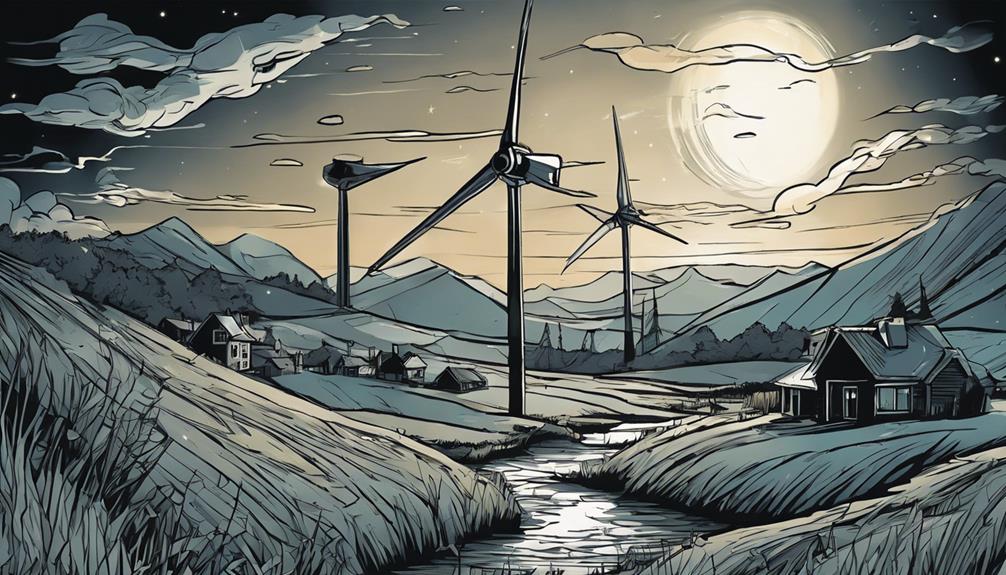
Residents near wind projects are expressing relief at the potential implementation of aircraft detection lighting systems to address concerns about light pollution.
The disproportionate impact of light pollution from wind projects on Tri-Cities and Benton County residents in Washington state has sparked worries.
Retrofitting existing wind projects with these detection systems may result in increased power rates for consumers. However, some business groups are apprehensive about the challenges of siting wind facilities equipped with aircraft detection lighting systems.
The fiscal analysis estimates that the proposed bill in Washington could cost the state approximately $846,000 to establish light mitigation requirements.
Despite the potential financial implications, the move towards integrating such systems highlights a growing awareness of the need to balance the benefits of renewable energy sources like wind farms with mitigating adverse effects on aviation and light pollution.
The community's reactions underscore the importance of finding solutions that promote sustainable development while addressing public concerns.
Impact on Renewable Energy Development
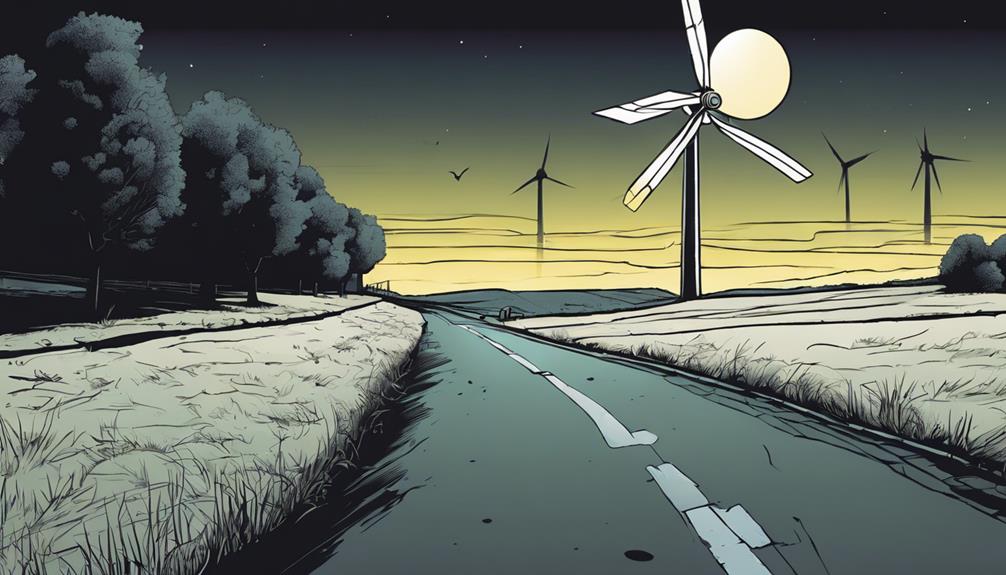
Amidst the push for increased renewable energy development in Washington, the implementation of aircraft detection lighting systems stands as a pivotal consideration for maintaining the region's rural landscape. Proposed wind turbines, like those at the Horse Heaven Hills project, could significantly alter the tranquil nature of the area.
The bill addressing light mitigation requirements aims to balance safety while preserving the aesthetic charm of rural landscapes impacted by wind energy projects. Approval of this legislation could set a precedent influencing future renewable energy endeavors in Eastern Washington. The wind turbines, towering as high as the Space Needle, may transform the night sky views, raising concerns about light pollution and the visual impact on the serene rural setting.
- The bill's passage may determine the fate of renewable energy projects in the region, shaping the landscape for years to come.
- Balancing safety requirements with preserving the rural landscape highlights the delicate dance between progress and tradition.
- The potential transformation of the night sky due to wind turbines poses a poignant question about the cost of renewable energy development.
- Offshore wind projects could offer a solution to preserving the rural landscapes while harnessing renewable energy sources.
Business Groups' Financial Concerns
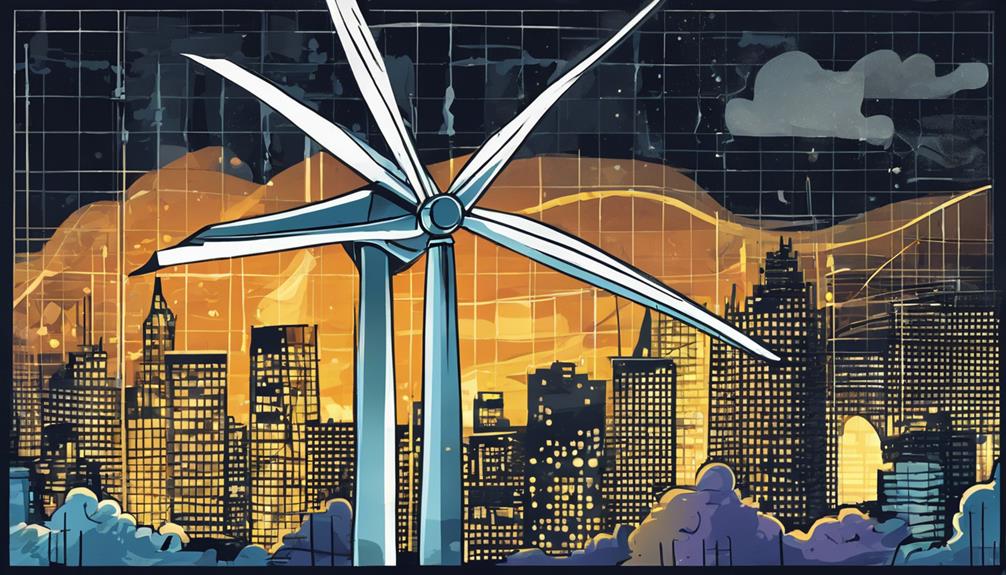
Business groups in Washington have raised financial concerns regarding the proposed bill on aircraft detection lighting systems for wind turbines. Retrofitting existing wind projects with detection systems could potentially lead to increased power rates for consumers in the region.
The Federal Aviation Administration's regulations mandating warning lights on wind turbines could complicate the siting process for new facilities, posing challenges for future renewable energy development. The fiscal analysis estimates that the state's expenses for establishing light mitigation requirements under the bill could impact the overall costs of wind energy projects.
Approval of the bill may have significant financial implications for the feasibility and affordability of future wind energy projects in Washington state. As a result, business groups are carefully evaluating the potential financial burdens associated with the bill and its impact on the industry's competitiveness and consumer power rates.
Future of Wind Energy Projects

Considering the proposed regulations in Washington for integrating aircraft detection lighting systems, the future of wind energy projects is poised to undergo significant changes to enhance safety and reduce light pollution. The introduction of these systems will revolutionize the way large wind facilities interact with their surroundings.
Here's what you can expect:
- Enhanced Safety: The implementation of advanced lighting systems will provide better visibility of wind turbines, reducing the risk of accidents involving aircraft.
- Reduced Light Pollution: By utilizing efficient lighting solutions, future wind energy projects can minimize their impact on the night sky, preserving the natural beauty of rural areas.
- Technological Integration: The integration of detection systems showcases the progress in merging sustainable wind power with innovative safety measures.
- Environmental Harmony: Balancing the need for renewable energy with environmental conservation, these systems pave the way for a greener future in wind power development.
Frequently Asked Questions
Why Are Wind Turbines Lit up at Night?
Wind turbines are lit up at night to increase visibility for aircraft and prevent collisions. The red lights on wind turbines serve as a warning to pilots about tall structures. FAA mandates these lights for safety.
How Far Away Can You See a Wind Turbine?
On a clear night, you can see a wind turbine from up to 20 miles away. The height of the turbine, typically around 400 feet, greatly contributes to its visibility. Light pollution rules and weather conditions also play a role.
Why Do You See Wind Turbines Not Turning?
When you see wind turbines not turning, it's like a silent giant taking a break. They pause for low wind, maintenance, or safety in high speeds. Modern turbines are smart, optimizing performance with sensors.
How Do You Monitor a Wind Turbine?
To monitor a wind turbine, you use sensors for wind speed, direction, temperature, and vibration. Data systems collect real-time info on operation and maintenance, while remote monitoring lets you track performance, detect issues, and schedule maintenance.
Are There Any Sound or Light Signals to Avoid Wind Turbines at Night?
At night, wind turbines have red lights that help pilots see and avoid them. However, there are no sound signals for them. Studies have shown that the sound of wind turbines is not harmful to human health, but some people may find it annoying. Ultimately, it depends on how loud wind turbine is perceived.
Conclusion
So, next time you're out at night, keep an eye out for those wind turbines! They may seem like giants in the dark, but with proper lighting systems in place, they can be easily spotted and avoided.
Don't let fear of the unknown overshadow the benefits of renewable energy. Embrace the wind turbines like fireflies in the night, guiding us towards a brighter and more sustainable future.




